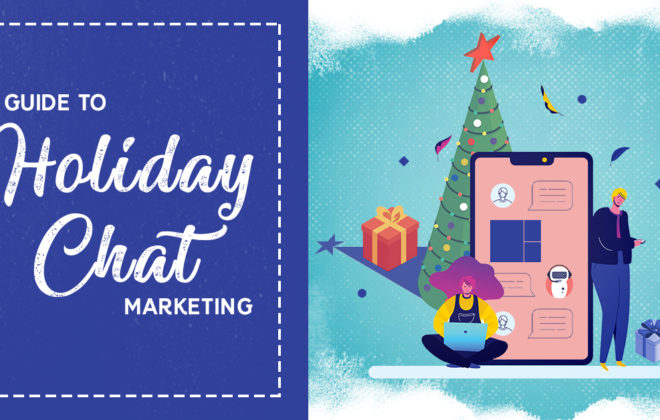
Lead Ads Don’t Have to Suck: How to Leverage Them Correctly
Lead ads (aka: lead generation ads) come with a bad reputation. Companies either think they don’t deliver or the leads are fake. Here’s the reality: lead ads are an easy way to grow your leads. And when done correctly, the ROI is high.
Not using lead ads? Here’s why you’re leaving sales on the table
Lead generation ads come with a number of benefits that could be costing your company sales. Our favorite things about this digital marketing strategy include:
- The cost per lead is efficient.
- There’s a higher conversion rate compared to sending someone to an offsite landing page.
- There’s no landing page to build.
- Filter leads by asking qualifying questions.
- Learn how your audience responds to messaging without overspending on an untested campaign.
What is a lead ad anyway?
Lead ads are more sophisticated than they used to be and use pre-populated forms. This reduces friction in getting leads to submit their information. You’ll also keep users on the paid platform instead of directing them to a landing page.
How do lead ads work? You can choose from different types of campaigns based on your goals. Choose what you want to promote, like demos, discounts, downloads, or events.
After you design your ad and craft your target audience, the ad shows up in users’ feeds. When they click, they’re taken to a form on the platform instead of going to a landing page on your website. The form includes pre-filled data to make it easy for leads to complete.
You can also add tailored features like:
- Qualifying questions
- Conditional responses based on their answers
- Appointment requests
- Store locator options
The exact types of lead ads vary by platform but each one is effective for the right audience as part of your lead generation strategy.
Why lead ads are effective
You might think that prospects from lead ads are cheap and ineffective. Sometimes people fill out the form and then deny having ever filled it out! That’s the common complaint: you’re paying for low value leads.
But we have plenty of lead ads examples from our clients who have run successful campaigns for high end offerings. Case in point: we’ve used Facebook lead ads for a golf client’s luxe offering that reached high-net-worth individuals with $1 million or more in income. In other words, quality prospects are online and filling out these forms, you just need to have the right campaign in place to reach them.
A bonus with lead ads is that it’s not expensive to figure out what works. You can test different strategies and get quick feedback. So not only are you bringing in prospects through your campaign, you can also use that data to inform your higher dollar marketing strategies on other platforms.
Here’s another successful lead ads example on Facebook for inexpensive and creative testing.
We have a client whose goal is to generate sales calls. It costs $900 per lead so any type of test we do takes a lot of budget. By using less expensive lead ads first, we can test whether people are willing to click a button based on different creative copy and graphics. Instead of spending $900 per lead on a test campaign, we’re spending just $50 per lead. Then we use the highest converting ad creative in their more expensive campaigns.

Boost your sales pipelines with lead ads using these best practices
How do you get lead ads prospects that don’t suck? Steal our favorite strategies that we use with our clients.
- Create a clear journey: Understand what are the objectives of your lead generation ads. Have the next step ready for your lead to take.
- Qualify your leads: Add a layer of qualification into the lead ad so you don’t waste your sales team’s time. We either send them to a calendar link to book a meeting or to a call center.
- Stay on top of real-time trends: Working with a digital marketing agency gives you access to insights on trends and strategies that are working for other clients as they happen. We know how to run a Facebook lead ad campaign with strategies that transition between industries.
- Expect realistic results: Assuming you have a strong sales system in place, you can expect a 1X to 5X return on your lead ad spend. Smaller budgets tend to skew on the lower end and higher budgets can reach the larger end.
Tell Us Your Goals
Send us your contact info and we'll follow up with a quick call to find out more about your goals and talk about how Clicks and Clients can help.
Best ads for lead generation by platform
Each platform has different features when running ads to generate leads. The main difference is how they show up, look, and customize audience data.
Lead ads for Meta / Facebook
Meta’s Facebook and Instagram come with some distinct benefits for lead ads.
Formatting: Facebook lead generation ads can include features like quotes, demo requests, newsletter subscriptions, or event registrations. Plus, you can run your ads on both Facebook and Instagram for maximized reach.
Customization: These lead ads let you get granular with the way you collect prospects’ data. You can add in questions to qualify your leads and segment them into specific buckets.
Higher intent focus: To get the best quality leads, lead ads on Facebook let you add friction to the form through either a review page or slide-to-submit feature. This cuts down on wasted meetings for your sales team.
CRM integration: Speed up the follow-up process by syncing your generated leads into your sales CRM.
Lead ads for Google
Like Facebook, Google Ads lead generation strategies cast a wide net in getting leads. The form extensions are used to manage from a lead input perspective and typically can integrate with most CRMs.
Because the extension appears in search, it’s a low barrier to entry for people to contact your business. It works best when coupled with other contact methods like calls, in order to give the user different options.
Google lead forms can be added to Search, Video, Discovery, and Display campaigns. When a lead interacts with your ad, they can fill out their information to receive follow up from your sales team. You can choose to optimize by volume or quality (here’s why we think you should pay more for more qualified leads).
Lead ads for LinkedIn
LinkedIn lead ads are designed for professional audiences and work well for B2B lead gen campaigns. It’s a great way to deliver content such as a white paper or case study while also getting leads.
Consider it a full funnel approach with lead forms being at the bottom of the funnel — it could be used in both prospecting and remarketing. LinkedIn offers auto-populated lead gen forms to encourage qualified leads to complete the form. These can reach prospects in two ways:
News feeds: Your sponsored content will appear in your target demographic’s news feed. Choose from single ad images, carousel image ads or video ads.
Messages: LinkedIn message ads are delivered directly to a prospect’s inbox on the platform. At least 1 in 2 prospects open these ads.
Pro tip: LinkedIn recommends switching out your form copy to keep your campaign fresh and attract new leads throughout the campaign.
Don’t forget to track your metrics
Any digital marketing strategy needs to be tracked, especially when experimenting with lead ads on different platforms.
Here’s what to track for lead ads specifically:
- Form leads
- Conversions
- Cost per result
Use A/B testing to create the best performing lead ad, one variable at a time. The goal is to run your lead ad long enough to attain statistical significance. If you spend too little or stop after a few days, you won’t have enough data to tell whether or not it’s working.
Also, incorporate sales quality control within your team. A frequent mistake we see is clients who automatically assume they’re getting bad leads. But there has to be some responsibility to make sure there’s a sound sales structure in place.
Test how often and how quickly leads are called back. This accountability determines whether or not you get back 1-3X your ad spend.

Client Example: Successful Lead Ads on Facebook
We used A/B testing on a client’s static Facebook ads versus video ads over a period of 30 days.
The results? The video ad had more than double the conversion rate of state ads. And the cost per lead was cut in half. Testing and finding out your audience preference has a huge impact on the results of your lead generation campaigns.
Bottom line – Lead ads don’t have to suck!
Lead generation ads don’t suck — you just need to know how to use them. And when you use them as a digital marketing testing ground, you can launch more expensive campaigns with better results.

Common lead ad FAQs
What is a lead ad?
A lead is an online ad that lets prospects fill out a form with their contact information. Your sales team uses that information to follow up and convert leads.
How do lead ads work?
Lead ads work by staying native to the platform the user is on instead of taking them to a new landing page. The ads can feature qualifying questions, appointment requests, digital downloads, or store locators.
How do you get lead ads?
You can create lead ads by going to the ads section of your preferred platform, like Facebook, Google, or LinkedIn.
What are lead ads on Facebook?
Lead ads on Facebook use an instant form to collect data through your target audience’s feed or stories.
What are the best ads for lead generation?
The best ads for lead generation depend on your business model. We recommend doing A/B testing to find out what your ideal audience responds to.
What is lead generation in ads?
Lead generation in ads is a type of digital marketing that collects data from qualified audiences that may be interested in your brand or offering.
What are Facebook lead generation ads?
Facebook lead generation ads are used to find prospects who match your ideal client profile. You can use the same ad creative on both Facebook and Instagram, since both platforms are owned by Meta.
How do you run ads to generate leads?
How to run ads to generate leads depends on the platform you choose. Google, Facebook, and LinkedIn each have their own ads manager program. Alternatively, you can hire a digital marketing agency to create a customized lead ad campaign for your company.
What are the objectives of lead generation ads?
The objective of lead generation ads is to find prospects with high intent related to your vertical. You can use qualifying questions to filter out colder leads and improve your sales conversion rate.
How to run a Facebook lead ad
In order to run a Facebook lead ad, you need to access either your business Facebook page, Meta Ads Manager, or Meta Business Suite. Start by creating your target audience and then developing the creative design and lead form sequence. Make adjustments based on the results of your lead ad campaign.
Tell Us Your Goals
Paul Rakovich
Browse All PostsTell Us Your Goals
Recent Posts
- Google PMax: Get the Most Out of Your Ad Campaigns While Combating Fraud
- Lead Ads Don’t Have to Suck: How to Leverage Them Correctly
- Why More Expensive PPC Ads are Almost Always Worth It
- Unlock the Secrets of Organic CPA: The Ultimate Guide to Cost Per Acquisition
- Secrets We’ve Learned from Years Working with Paid Account Reps at Meta, TikTok, LinkedIn and Google

